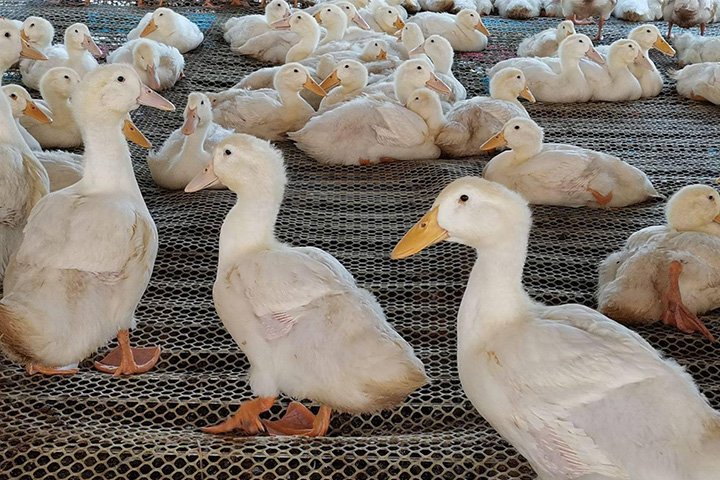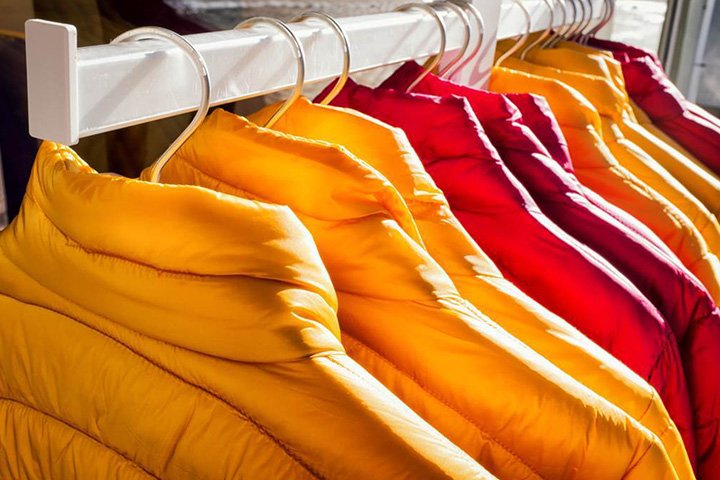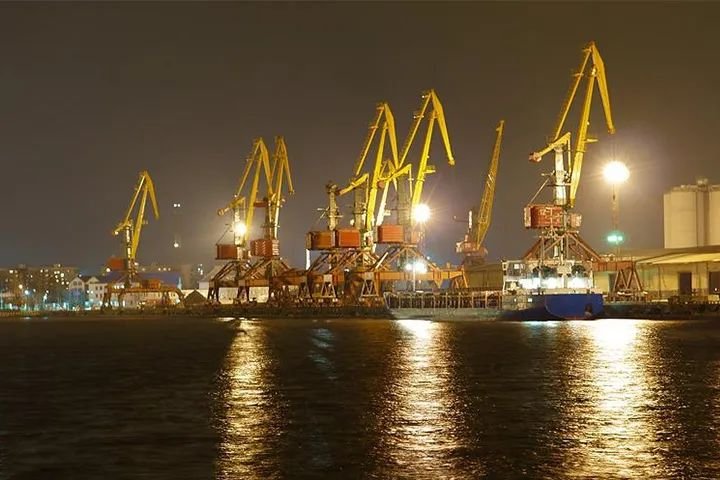Cn-down > Domestic news > News content
2023-07-16 来源:金绒 浏览量:1279
summary
The overall market remained stable this week (0709-07015).
The current season is entering the summer heat, with the quality of feathers continuously declining and the market's willingness to purchase goods is not strong. July was supposed to be the peak season for finished down sales, but this year, domestic demand for down products has been sluggish, foreign trade orders have significantly reduced, and overseas economic recovery is weak, which may continue to affect the trend of down market in the second half of the year.
In RMB terms, China's exports decreased by 8.3% year-on-year in June, showing negative growth; In US dollar terms, China's exports decreased by 12.4% year-on-year in June, marking two consecutive months of negative export growth. And textiles and clothing also experienced two consecutive months of negative export growth, with a slowdown and expansion in June. The impact of weakened external demand is still ongoing.
The supply of duck seedlings is still gradually increasing, and the corresponding time for stocking up is "out of season". However, due to seasonal factors such as reduced production and industry overcapacity, the slaughter volume in July may show a decreasing trend compared to the previous month. As summer leisure consumption gradually improves, August may once again become the peak season for duck product sales.
Exchange rate of USD to RMB: 7.1926

Exchange rate of USD to RMB: 7.1886

Exchange rate of USD to RMB: 7.1765

Exchange rate of USD to RMB: 7.1527

Exchange rate of USD to RMB: 7.1318

good news
The 'Three Dog Days' with heat as its signature has begun! This year is July 11th, and it has been an ultra long standby time of 40 days. Historical observation data shows that the proportion of high temperatures in the Jianghuai and Jiangnan regions is the highest throughout the year, and the true heat is in the "three volts".
On July 10th, with the "convergence" of the northern and southern high-temperature zones, areas along the Yangtze River joined the "high-temperature camp" on a large scale, and the number of high-temperature stations may reach a new high within the year. For this reason, the Central Meteorological Observatory continues to issue orange warnings for high temperatures, and some provinces have even issued red warnings for high temperatures.
Due to the current seasonal factors, the difficulty of duck breeding has increased, so there is not a large number of large size hairy ducks available for sale, while small size ducks in the Yinan area are steadily available for sale. In addition, due to the high losses suffered by farmers in the early stage, the enthusiasm for placing duck seedlings and restocking decreased, resulting in a slight shortage of wild ducks sold in July.

According to the statistics of Mysteel's agricultural product sample enterprises, the peak of the emergence of white feather commercial duck seedlings in the first half of the year was in the 17th week. After entering the 22nd week (June), molting and reserve breeding ducks began to be produced, and from July to August, they were still gradually increasing. The tight supply pattern gradually changed.
Although there is currently a shortage of farmed hairy ducks in the market, it is expected that the consumption of catering and end markets will improve in the third and fourth quarters of the future. The peak season for large-scale products and segmented sales will come, and the inventory pressure of freezers and distributors will improve. The enthusiasm for acquisition will improve, and the investment volume will increase. The demand side will benefit the hairy duck market.
From other perspectives, the current prices of substitute pigs continue to bottom out, significantly suppressing the demand for poultry meat. Looking at the expectations for pig prices in the second half of the year, the slow recovery rate on the consumer side makes it difficult to turn optimistic, which to some extent suppresses meat and poultry consumption.
Quang Viet, a Down jacket foundry, announced that the consolidated monthly revenue in June was 1.895 billion yuan, a monthly increase of 18.55%, and the operation continued to heat up. Quang Viet stated that it is estimated that the third quarter will be the peak of annual performance.
Chairman Wu Chaobi stated that as we enter the peak season of traditional production and shipment, Quang Viet's operating performance will gradually improve. Although the consolidated revenue in June decreased by 9.62% annually, the main reason is the higher base period in the same period last year. In addition, new brand customers and new product projects continue to be discussed, and future operational development is cautious and optimistic.

KWANG LUNG, another Down jacket manufacturer, pointed out that the clothing department's revenue in May was 708 million yuan, with a monthly increase of 88.7% and an annual increase of 32.5%, and its operation has recovered its growth strength.
After the peak season shipment level of ready-made clothing is restored, KWONG LUNG expects that the revenue share of ready-made clothing will further increase in the third quarter after reaching 60% in the previous quarter, and the profit margin can also be improved.
A heatwave has swept through the northern hemisphere, while South Africa, located in the southern hemisphere, is experiencing a cold winter. On the 10th local time, Johannesburg, the country's largest city, suffered a rare snowfall that has not happened in more than 10 years.
On that day, residents of the city woke up to find that the roofs and streets were covered in silver. According to Agence France Presse, the last time South Africa experienced such heavy snow was in 2012.

Not only in Johannesburg, but also in the southern part of Gauteng Province on the 10th. It is expected that the snow will last all day. In addition, the Eastern Cape Province in the south and the high altitude area of KwaZulu-Natal in the east are also expected to be affected by snow.
It is reported that most of South Africa belongs to the warm temperate climate, with an annual average temperature of 10 ℃ -24 ℃, and the average winter temperature in Johannesburg is between 4 ℃ -17 ℃. Although the winter controlled by El Ni ñ o tends to be warmer, the frequent occurrence of extreme weather also makes the climate more unpredictable.
bad news
On July 13th, the General Administration of Customs announced that in the first half of 2023, China's total import and export value was 20.10 trillion yuan, a year-on-year increase of 2.1%, measured in RMB (the same below). Among them, exports reached 11.46 trillion yuan, an increase of 3.7%; Imports reached 8.64 trillion yuan, a decrease of 0.1%; The trade surplus is 2.82 trillion yuan.
In the first half of the year, China's foreign trade import and export scale exceeded 20 trillion yuan for the first time in history, with the first and second quarters reaching 9.76 trillion yuan and 10.34 trillion yuan respectively, achieving positive growth year-on-year. From a month on month basis, the second quarter saw a 6% increase compared to the first quarter, and the month on month growth in May and June was 1.2%.
In June of this year, China's import and export reached 3.49 trillion yuan, a decrease of 6.0%. This is the third consecutive month since April this year when year-on-year growth rate has declined. Among them, exports reached 1.99 trillion yuan, a decrease of 8.3%; Import of 1.5 trillion yuan, a decrease of 2.6%; The trade surplus is 49.125 billion yuan.

Regarding the changes in the year-on-year growth rate of foreign trade, Lv Daliang, Director of the Statistics and Analysis Department of the General Administration of Customs, stated that the year-on-year growth rate seems to have been "slow" a bit, but the month on month growth rate is steadily moving forward step by step. In the second quarter, the month on month growth rate has also been increasing for the past two consecutive months, and stable development is supported.
In the first half of the year, China's foreign trade import and export scale achieved new breakthroughs and structural optimization, demonstrating strong resilience. At present, the recovery of the world economy is sluggish, global trade and investment are slowing down, risks of Unilateralism, protectionism and geopolitics are rising, and the direct impact of weakening foreign demand on China's foreign trade continues.
In June, China's textile and clothing exports to the world amounted to 188.09 billion yuan, a year-on-year decrease of 16.1% and a month on month increase of 8.1%. Among them, textile exports amounted to 80.59 billion yuan, a decrease of 10.5% and a decrease of 2.5% month on month; Clothing exports reached 107.50 billion yuan, a decrease of 10.8% and a month on month increase of 17.6%.
According to a plan announced by the French government on the 11th, if people repair damaged clothing and shoes and continue to wear them, they can apply for corresponding monetary rewards from the government.
According to Agence France-Presse, the State Secretary in charge of ecology, Belanger Kuyar, announced this plan at an event that day, which was launched in October this year, with a total fund of 154 million euros. People can claim 7 euros for repairing a heel, and 10 to 25 euros for repairing clothes.
It is said that the French government began promoting large-scale reforms in the textile industry at the end of last year, and the plan announced on the 11th is part of the reforms.

The report also stated that a total of 3.3 billion pieces of clothing, shoes, and household textiles were put on the market in France last year, while the French throw away 700000 tons of clothing each year, two-thirds of which become garbage.
The import value of French clothing from January to April this year was 6.613 billion US dollars, jumping to the highest level since 2019, indicating a significant recovery in French clothing demand. During this period, France imported a total of $1.631 billion in clothing from China, accounting for 20.35% of France's total clothing imports.
Last year, France's imports of clothing from China have been steadily declining, but China remains France's largest supplier of clothing. In addition, China's Down jacket will export 3.229 million pieces to France in 2022, accounting for 17% of the total exports to the EU.
 热门排行
中国三大羽绒生产基地之—广东吴川
全球最奢侈羽绒服排行
一件羽绒服需要多少只鸭子的羽绒?
飞丝是什么?能代替羽绒?别被骗了,三种方法让你告别假羽绒服!
2017羽绒原料价格一路上涨,究竟为何?
你的羽绒服为什么钻绒?涨知识了
羽绒被的价格一般是多少 通过成本看羽绒被价格
中国羽绒服四大品牌调查:到底谁才是最强王者?
羽绒金网:羽毛、羽绒、毛绒计价
《羽绒羽毛》、《羽绒羽毛检验方法》新版标准发布,2017年7月1日实施
热门排行
中国三大羽绒生产基地之—广东吴川
全球最奢侈羽绒服排行
一件羽绒服需要多少只鸭子的羽绒?
飞丝是什么?能代替羽绒?别被骗了,三种方法让你告别假羽绒服!
2017羽绒原料价格一路上涨,究竟为何?
你的羽绒服为什么钻绒?涨知识了
羽绒被的价格一般是多少 通过成本看羽绒被价格
中国羽绒服四大品牌调查:到底谁才是最强王者?
羽绒金网:羽毛、羽绒、毛绒计价
《羽绒羽毛》、《羽绒羽毛检验方法》新版标准发布,2017年7月1日实施
 推荐阅读
“吴川力量”助中国羽绒接轨世界
中国三大羽绒生产基地之—广东吴川
中羽协第二期新国标培训班 在“羽绒之乡”广东吴川成功举办
羽绒之乡:贵港桥圩镇将打造旅游休闲特色小镇
广西贵港桥圩镇:打造中国羽绒休闲旅游特色小镇
羽绒金网:羽毛、羽绒、毛绒计价
羽绒别急着收 中央气象台发布寒潮蓝色预警 部分地区降温超12℃
上海消保委检测 千元鹅绒被用鸭毛绒填充
冻哭丨降温10℃!鸡年首个寒潮预警来袭,你准备好了吗?
传统羽绒产业如何实现转型升级?四川玉泉镇产业集群发展
推荐阅读
“吴川力量”助中国羽绒接轨世界
中国三大羽绒生产基地之—广东吴川
中羽协第二期新国标培训班 在“羽绒之乡”广东吴川成功举办
羽绒之乡:贵港桥圩镇将打造旅游休闲特色小镇
广西贵港桥圩镇:打造中国羽绒休闲旅游特色小镇
羽绒金网:羽毛、羽绒、毛绒计价
羽绒别急着收 中央气象台发布寒潮蓝色预警 部分地区降温超12℃
上海消保委检测 千元鹅绒被用鸭毛绒填充
冻哭丨降温10℃!鸡年首个寒潮预警来袭,你准备好了吗?
传统羽绒产业如何实现转型升级?四川玉泉镇产业集群发展